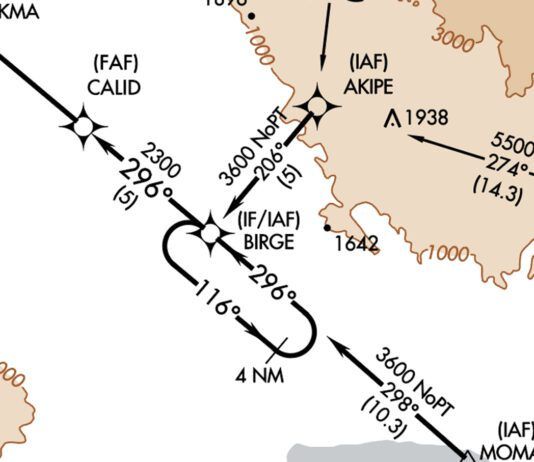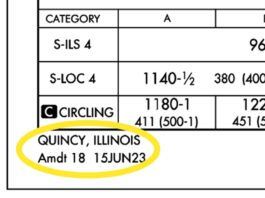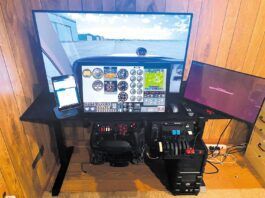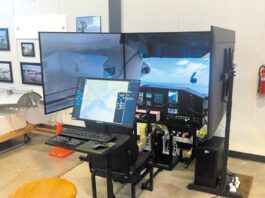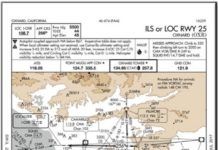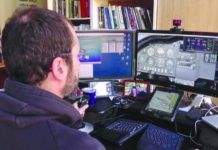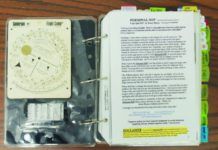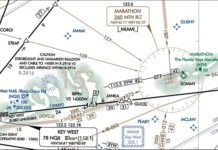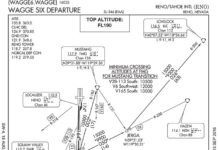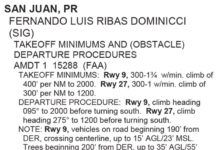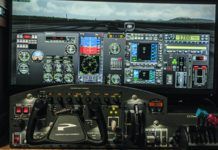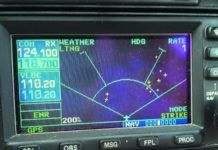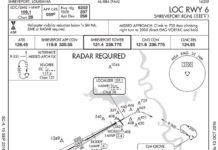Readback October 2017
The absolute best bang for the buck in charting is via a tablet and app as youre using. You didnt mention your transponder, but if youve got a new Garmin GTX 345, youve already got some connectivity between the iPad and GNS430W. Otherwise, you might consider a Flightstream 210 for that connection to exchange a lot of data between tablet and navigator.
Readback: September 2017
I submitted a PIREP yesterday that didnt get disseminated properly. Not only did it not show up during the 1.7 hours left in the flight, it wasnt listed when I checked after landing on the aviationweather.gov/adds web site for PIREPs in the previous eight hours. However, after submitting an inquiry about this to Lockheed Martin, it showed up the next morning (about 20 hours after the flight).
Readback: August 2017
In April Killer Quiz, The Prof and the Pilot, I dont think that the answer to the last question is correct. With tailwind, one should reduce the airspeed below best glide speed, which in turn reduces the sink rate. Gliders pilots are very familiar with these concepts.Unfortunately, Cessna doesnt publish sink rates at various speeds to compute that accurately, so we are left to back-of-the-envelope calculations. We know that at best-glide speed (65 knots.
Readback: July 2017
I just got around to trying Jeff Van Wests IFR Sim Challenge from the Feb. 2017 issue. Its great! Many of us use desktop simulators like Prepar3d to practice instrument procedures. This makes it really challenging in a useful way. Please keep up this feature. Im sure it will only get better as you work on it.
Readback: June 2017
I just got the April issue of IFR and your editorial (Do You Need EFIS?) exactly described my dilemma! My HSI needs to be repaired and Aspen has a sale on. To get the Aspen and install it is just a few grand more than repairing the HSI. I found Put It Together: DIY SOP in the May issue to be excellent. The creation of a personal SOP is a fantastic venture for any pilot and a very worthwhile, enjoyable and educational process.
Readback: May 2017
Im not sure why you think general aviation is dying as you state in your Remarks in March. Kit aircraft are flying off the shelves and many are backordered. Deposits are even flying in for aircraft kits that arent in production yet. We have so much business instructing that we have to turn some away due to not enough pilots and aircraft in the fleet.
Readback: April 2017
In your January 2017 issue you have an interesting article about flows, checklists, do-lists and callouts. However, that sample checklist you provide misses one important aspect: numbering.Try saying (or verbalizing) 1 Switches Set, 2 Fuel Totalizer Set, 3 Altimeters Set, 5 Transpo.....You wont get through the Transponder item without realizing that there should have been a number 4.
Readback: March 2017
Jeff Van West is one of my favorite modern-day aviation writers. His article, Seeing Double in the November issue is a fine example of Jeff taking us by the hand through important, but oft overlooked and esoteric aspects of our IFR life. But his use of the word declination instead of the correct word, variation, is a fingernail on the blackboard kind of irritant, if you remember blackboards. I have these old yellowed books that I studied in the 50s: AF Manual 51-40, Air Navigation Vol 1, by the Department of the Air Force (1959), page viii, and The American Flight Navigator by John Dohm (1958) page 324.
Readback: February 2017
Not sure if this is a question or a frustration, but after reading the August 2016 quiz about PIREPs, it made me wonder why there are so few PIREPs in the system. It appears that most reports of icing, tops, and bases that are given to ATC never make it into the PIREP system. Most of us frequently report these conditions when departing or arriving, however I seldom take the time to change frequency and submit an official PIREP. Is there a process or key phrase that we can say to ATC to ask them to submit the PIREP on our behalf. Seems like if a pilot reports icing in climb or in descent to departure or approach, ATC should submit that report as a PIREP.
Reader Feedback: January 2017
This gets into how these various Advisory Circulars are updated. Once an AC is issued, its assigned a number and a version letter, such as AC 00-45G, Aviation Weather Services. That version can be revised by issuing changes. So, the full specification of the most recent document is AC 00-45G, Change 2. The main document-original version-is what is returned by the various searches; youve got to dig just a bit further to find the changed versions.
Reader Feedback: December 2016
When I was based at PDK airport, a very busy airport in Atlanta, GA used by many business jets, the tower would routinely route smaller aircraft approaching from the east to cross over mid-field at or above pattern altitude and enter a left downwind for Runway 3L. Doing so while there were other aircraft in the pattern, landing and taking off. The reason was to keep the longer Runway 3R open for business jets landing and taking off. In this instance, a pilot would be crossing over two active runways.
Reader Feedback: November 2016
In the June issue, a reader had a question regarding the TERPZ FIVE departure at BWI. Your response in a lost com scenario was that you should climb to TERPZ at 11,000 then climb to your filed altitude after 10 minutes. I disagree. In the regs, 91.185 offers clear altitude guidance in a lost com situation. It is simply the highest of 3 altitudes-the altitude in your clearance, the altitude you were told to expect, and the highest IFR altitude. No mention is made about waiting for 10 minutes nor about a filed altitude.

